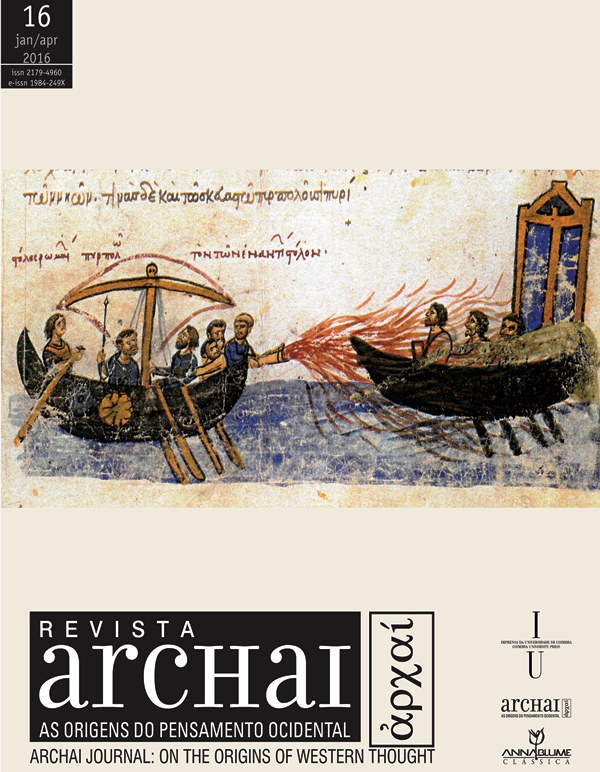A alma-camaleão e sua plasticidade:
dualismos platônicos no Fédon
DOI:
https://doi.org/10.14195/1984-249X_16_7Abstract
Abstract: This paper aims to address the problem of the separation between body and soul in Plato's Phaedo, in search of both its ontological features and moral consequences. Apart from the traditional approach and use of dialogue as a literary and philosophical milestone for all body-soul dualisms in the history of philosophy, I believe that two ways of understanding this separation are outlined in the dialogue. The first one would indicate a moral separation, regarding what a philosopher should take care of: philosophers would be able to cure of the soul, but not of the body. A different way to address this separation between body and soul is the one I would like to consider as an ontological separation: the soul is so independent from the body that is declared to survive after its death. Although both concepts of this separation could seem pretty familiar, due to the success they had throughout the history of Platonism until today, the duplicity of meanings expressed by the Platonic passages carries on an irrevocable ambiguity. The aim of this paper is to propose, however, is a quite different solution for resolve this ambiguity. My suggestion is that we should pay the proper attention to the ontological and epistemological ductility of the soul. Bostock (1986, p. 119 @Phd. 79c), called it the chameleon-like traits of the soul, enabling the soul to assume bodily features to meet the sensible world. Separation between body and soul, rather than an ontological, seems to need the contribution of a permanent epistemological and moral effort of the soul.
Keywords: Plato, Soul, Phaedo, Affinity argument.
Downloads
Downloads
Published
How to Cite
Issue
Section
License
Given the public access policy of the journal, the use of the published texts is free, with the obligation of recognizing the original authorship and the first publication in this journal. The authors of the published contributions are entirely and exclusively responsible for their contents.
1. The authors authorize the publication of the article in this journal.
2. The authors guarantee that the contribution is original, and take full responsibility for its content in case of impugnation by third parties.
3. The authors guarantee that the contribution is not under evaluation in another journal.
4. The authors keep the copyright and convey to the journal the right of first publication, the work being licensed under a Creative Commons Attribution License-BY.
5. The authors are allowed and stimulated to publicize and distribute their work on-line after the publication in the journal.
6. The authors of the approved works authorize the journal to distribute their content, after publication, for reproduction in content indexes, virtual libraries and similars.
7. The editors reserve the right to make adjustments to the text and to adequate the article to the editorial rules of the journal.



